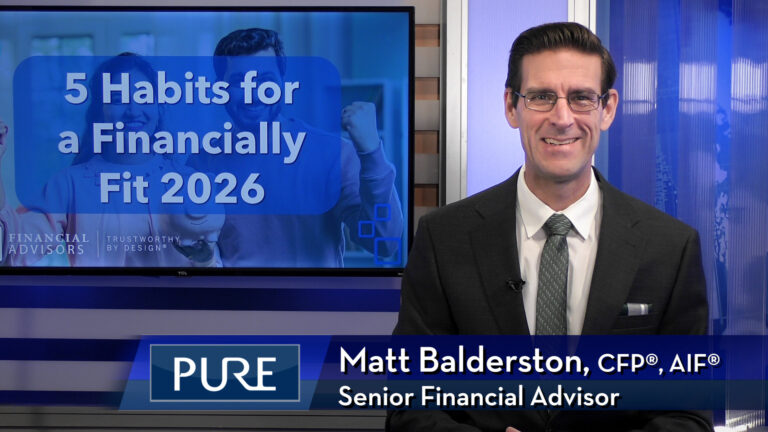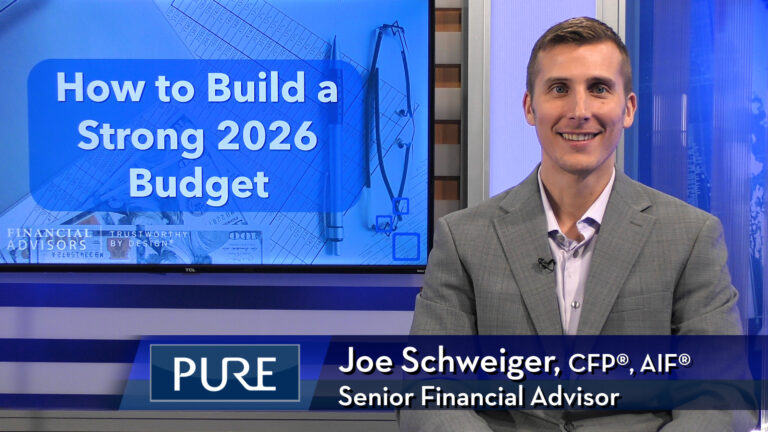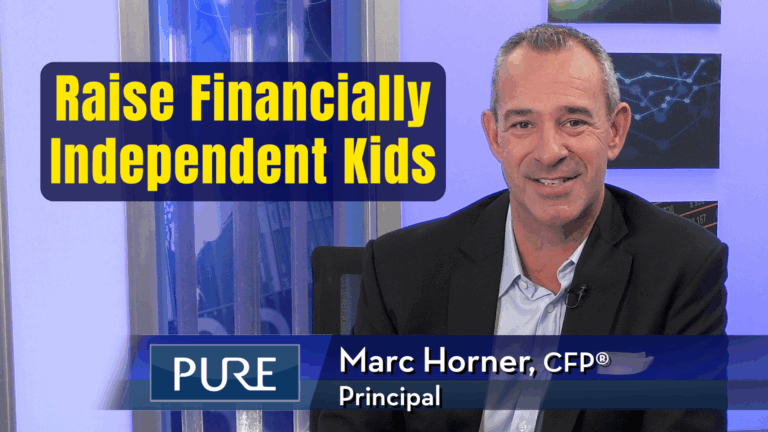Maximize your retirement by controlling taxes. Pure’s Financial Planner, Daniel Goldstein, CFP®, AIF®, provides insights into creating portfolio diversification and strategically locating assets to reach your long-term retirement goals. You’ll learn about:
- How the tax triangle can apply to your situation
- How retirement funds are being taxed now
- Where you are in our current tax code
FREE GUIDE | Why Asset Location Matters Guide
Transcript
Taxes are going to be your biggest expense in retirement. Your ability to control taxes throughout retirement is what’s going to ultimately lead to a successful retirement for yourself. Today we’re going to talk about taxes, creating tax diversification in your portfolio, locating your assets in a way to stabilize your taxes throughout retirement, and leave more money in your pocket to spend on the things that you want to do.
Tax Triangle
There are three pools that you can save assets into towards retirement. Up here, you have the tax-free pool, down here in the bottom left, you have the taxable pool, and over here in the bottom right, you have the tax deferred pool. Each of these pools have a different tax profile and your ability to save into these pools will ultimately determine what tax rate you pay in retirement. Let’s start up here at the top, this tax-free pool. Everything that comes out of here is going to be taxed at 0% tax rates, the growth and distribution all tax-free. The Roth account is the most typical type of account you’ll see in this pool. Down here in the taxable pool, this is going to be your capital asset pool, so think about real estate assets or any investment accounts outside of your retirement go into this pool. Down here in the bottom right, this is going to be your tax deferred pool so think about all your retirement accounts, 401(k)s, IRAs, pensions, and Social Security are all included in this account. Up here in the tax-free pool, 0% tax rate on the distribution. Down here in the taxable pool, we have what’s called a tax preferred rate for most people that’s going to be 15%, for some, it could be as little as zero and for others as much as 20. The key here is that you have to hold the asset for a year and a day longer, that’s called long term cap gains treatment. Down here in the tax deferred pool, this is going to be the highest tax rate that you pay in retirement. This is ordinary income rate. Right now, that rate is between 10 and 37%. For most people, this is where the majority of their assets are located. You put pre-tax money into this pool, it grows tax-deferred but when it’s time to take it out, you get taxed at ordinary income rates. The goal here is to get money into each one of these pools.
Current Tax Brackets
Let’s talk a little about why that matters to you, and how do you do that. In order to understand how the tax triangle applies to your situation, we first have to learn a little more about taxes. Let’s start with our current tax code. Our current tax code looks like a stair step, right. Each stair step represents a different tax bracket. Current tax brackets look like this. These are your federal marginal tax brackets which means this is where your last dollar that you earned is taxed, and they work like a stair step. You fill up the 10% bracket first any additional income you have fills up to 12% then the 22% and so on and so forth. These tax rates were established in 2018 by something called the Tax Cut and JOBS Act. Your understanding of where you fit in this tax code will help you figure out how you create tax diversification in your portfolio. We know tax rates are going up in the future. In fact, in 2026, tax rates are set to reset which means that these middle tax brackets are going up. This gives you an idea of what those tax brackets are going to look like. In addition, each of the tax brackets are going to compress, which means more of your income is going to be taxed at higher tax rates. First, understanding where you fit into this tax code. Second, understanding where your tax, your money is being taxed right now. And then third, understanding how your income is going to be generated in the future and what taxes you’re going to be paying.
Back to the tax triangle. For most people, the majority of their assets and income are in this tax deferred pool. This isn’t all your money. A lot of this money was lent to you by the government when you’re making contributions to your retirement plans while you’re working. In retirement, you’re going to have to pay that money back. How you pay that money back is going to determine, ultimately, the type of success you have in retirement. It may make sense to start thinking about moving money here into the tax-free pool. Why? Because once you move money there you never pay taxes on it again, this is called a Roth conversion, but this is not an easy process.
There are a lot of steps and levers to consider and how to best do that. That’s why we offer this free assessment. Understand your situation, opportunities to improve your tax situation and, ultimately, create more income for you in retirement.
Subscribe to our YouTube channel.
IMPORTANT DISCLOSURES:
• Investment Advisory and Financial Planning Services are offered through Pure Financial Advisors, LLC, a Registered Investment Advisor.
• Pure Financial Advisors LLC does not offer tax or legal advice. Consult with your tax advisor or attorney regarding specific situations.
• Opinions expressed are subject to change without notice and are not intended as investment advice or to predict future performance.
• Investing involves risk including the potential loss of principal. No investment strategy can guarantee a profit or protect against loss in periods of declining values.
• All information is believed to be from reliable sources; however, we make no representation as to its completeness or accuracy.
• Intended for educational purposes only and are not intended as individualized advice or a guarantee that you will achieve a desired result. Before implementing any strategies discussed you should consult your tax and financial advisors.
CFP® – The CERTIFIED FINANCIAL PLANNER™ certification is by the Certified Financial Planner Board of Standards, Inc. To attain the right to use the CFP® designation, an individual must satisfactorily fulfill education, experience and ethics requirements as well as pass a comprehensive exam. Thirty hours of continuing education is required every two years to maintain the designation.
AIF® – Accredited Investment Fiduciary designation is administered by the Center for Fiduciary Studies fi360. To receive the AIF Designation, an individual must meet prerequisite criteria, complete a training program, and pass a comprehensive examination. Six hours of continuing education is required annually to maintain the designation.













